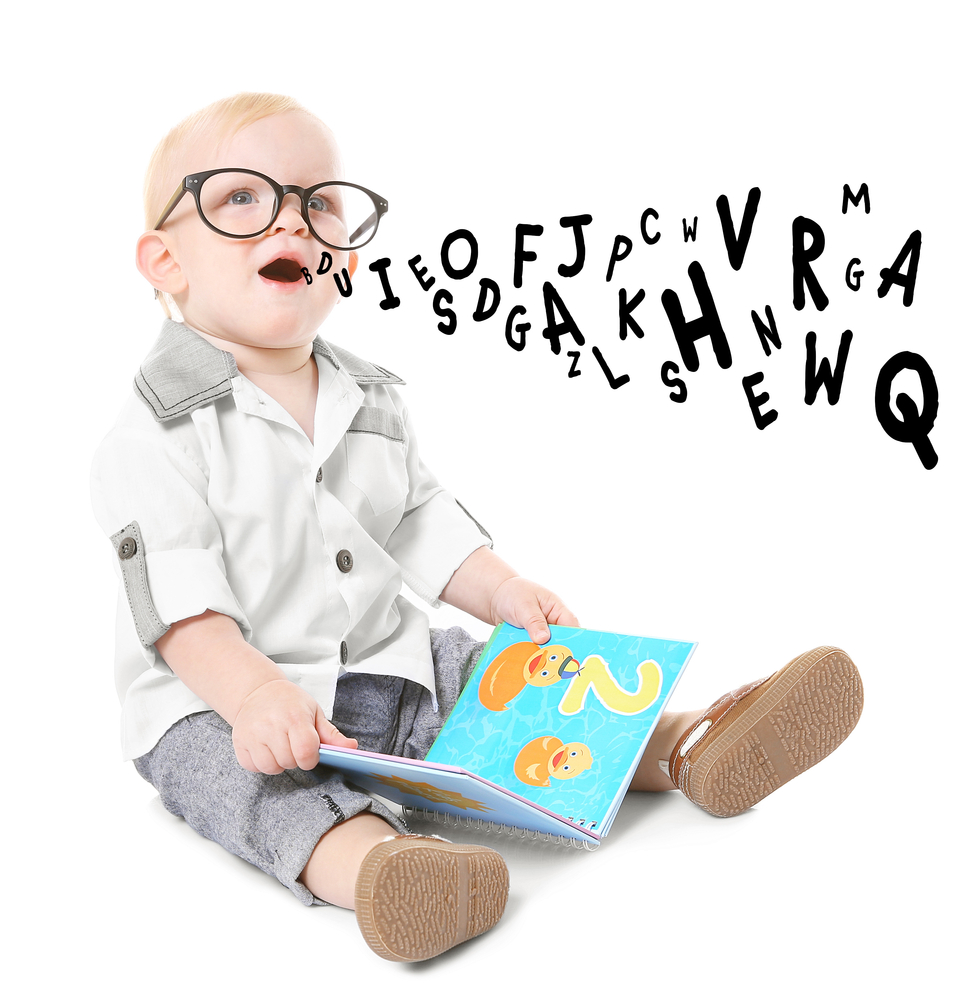I often recall this hilarious incident when my nephew Youssef was only three years old and was having the following conversation about his broken toy with my sister:
- Youssef: Mommy, eh 7asal lel 3abeya ta3ty. (Mom, what happened to my car?)
- Mother: Bazet ya 7abiby. (It got broken dear.)
- Youssef: Meen bayyazha? (Who broked it?)
Taken by the intuitive innocent response, everyone in the room burst into laughter. My memory automatically summoned the topic of language acquisition that I studied in my first academic semester at college as a student of linguistics. What we have here is vivid manifestation of one of the first language acquisition processes; namely, confusing morphology rules to generate derivations. Before I go into more technical details, let us start over the right way and ask: What is language acquisition?
Acquisition versus Learning
First language acquisition is an extremely sophisticated, yet remarkably speedy subconscious process. In essence, it is very different from second language learning. Think of how hard it is to learn a second language; it might take up several years, and one will still never match the competency of native speakers. In general, mastering a language requires addressing four skills: listening, reading, writing, and speaking. What is common between the two processes, however, is that the receptive skills (listening/reading) are easier and faster to acquire/learn than the productive skills (speaking/writing).
It has been suggested that there is an innate predisposition in the human infant to acquire language. Pioneer linguist Noam Chomsky, who is the most influential figure in modern linguistics, had an interesting theory about language acquisition. He maintained that the human mind contains a Language Acquisition Device (LAD); a hypothetical module that encodes the universal principles of language into the child’s brain, and hence, help it rapidly acquire language.
However, this inborn language capacity has some basic requirements to function. For example, the child must be physically capable of sending and receiving sound signals; that is, enjoys healthy auditory and articulatory systems. Also, he/she has to have a chance to interact with other language-users who would provide him/her with language samples or input. A study conducted in the 1990s stated that a normal-hearing child who was raised by deaf parents was only able to acquire the sign language, which the triple used for communication. Although the parents gave their son ample exposure to television and radio, he failed to speak and understand spoken language.

The Process
As they acquire language, children do not simply imitate the utterance that they hear around them. Imitation as a process of language acquisition has not been widely accepted among theorists and there are several arguments against it. First of all, children who are still unable to speak are capable of learning and understanding language. I was thrilled to find how my daughter seemed to understand and react to my speech while she was still incapable of speech. Even when they overcome their speech impairment, they still cannot imitate adult speech because of their limited knowledge of grammar and syntax. Check the telegraphic speech stage below for examples.
Moreover, children’s unpredictable mistakes indicate that they do not acquire a repertoire of phrases, but rather a set of rules that help them generate brand new utterances. Let us go back to the example cited at the very beginning; Youssef has definitely not acquired the word bayyazha from an adult. Instead, he made a wrong morphological derivation to make another form (bayyaz “بيَّظ”) of the colloquial Arabic verb baz “باظ”. He adapted the morphological structure of other past tense verbs such as ghayyar “غيًّر”.
Similarly, children acquiring English as their first language often treat irregular verbs as regular. Instead of “held” and “went”, they would come up with words like “holded” and “goed”; simply because they apply the "ed" suffix rule to form the past tense. The same applies to the "s" suffix to make the plural form of nouns; you might hear “toothes” instead of “teeth” and so on. Some children would even mix up different rules and come up with utterances like “womens” and “broked”.
Developing phonology is also evident; especially, when the child’s articulatory abilities are still humble. We might find children’s messy pronunciation amusing; but in fact, they are performing sophisticated subconscious phonological processes. I bet we all heard a little child pronouncing the “t” phoneme as “k”, as in “أكلع” instead of “أطلع” or “tat” instead of “cat”; my two-year old daughter pronounces “جبنة” as “نمنة”. This process is known as consonant harmony, where children substitute the phonemes they find hard to articulate with easier ones that make similar sounds. Another phonological process is consonant cluster simplification, where they drop one or more consonant sound from a word as in pronouncing “عربية” as “عبية” or “spoon” as “poon”.

Stages of Language Acquisition
The very first stage of language acquisition is phoneme perception, at which infants process the sounds they hear in the early months of their lives. In response, they start to turn their heads in the direction of sounds. Later, they develop different patterns of crying styles to express different needs; they also produce sequences of vowel-like sounds.
By four months of age, babies develop the ability to articulate velar consonants* and start producing one-syllable sounds like “ga” and “ka”, known as cooing. The third stage, babbling, takes place between six and eight months of age. Infants become able to make multi-syllable utterances combining consonants and vowels; such as “ba-ba-ba”. Very soon, they learn to articulate new consonants and produce more complex syllable combinations, such as “ma-da-ga-ba”. Although these sounds are meaningless, this “pre-language” provides the child with some experience of the social role of speech.
Between twelve and eighteen months, toddlers use single words or holophrases to make requests or express feelings. By the age of twenty months, children’s repertoire moves beyond 50 words and they start to use a variety of two-word combinations or protosentences, such as “mommy eat”. The adult interpretation of the holophrases and the protosentences depend on the context. For example, if the child says “spoon” (or “poon”), it is either naming the object or saying “I want a spoon”. Similarly, the combination “baby juice” can either mean “the baby is drinking juice” or “the baby wants juice”.
At two years of age, children can produce up to 300 words and understand five times as many. Then comes the sixth stage known as the telegraphic speech at two-and-a-half years. This stage features humble syntactic abilities as the child develops the skill of sentence building. They produce laconic utterances made up of content words (nouns, verbs, adjectives, etc.) and drop functional words (articles, propositions, etc.). Examples include “baby play garden” or “Daddy goed bye-bye car”.
Finally, by three years of age, the vocabulary grows to hundreds of words, the grammatical and syntactic abilities advance, and the pronunciation becomes closer to that of an adult. In general, normal children develop language along almost the same schedule, which is tied to the maturation of the brain; however, variations can always exist.
No doubt, the human language faculty is a great gift bestowed upon humanity; it is by far the most sophisticated communication system of all time. Language acquisition and use involve highly-advanced cognitive and biological mechanisms that have always puzzled thinkers and linguists. Despite the evident linguistic diversity over time and space, this incredible human ability to-do-language remains universal.
*Velar consonants are pronounced with the back part of the tongue against the back part of the roof of the mouth (palate).
References
ielanguages.com
birmingham.ac.uk
intropsych.com
Yule, George, 2006. The Study of Language. Cambridge, UK: Cambridge University Press.
*This article was published in SCIplanet printed magazine, Autumn 2017 Issue.